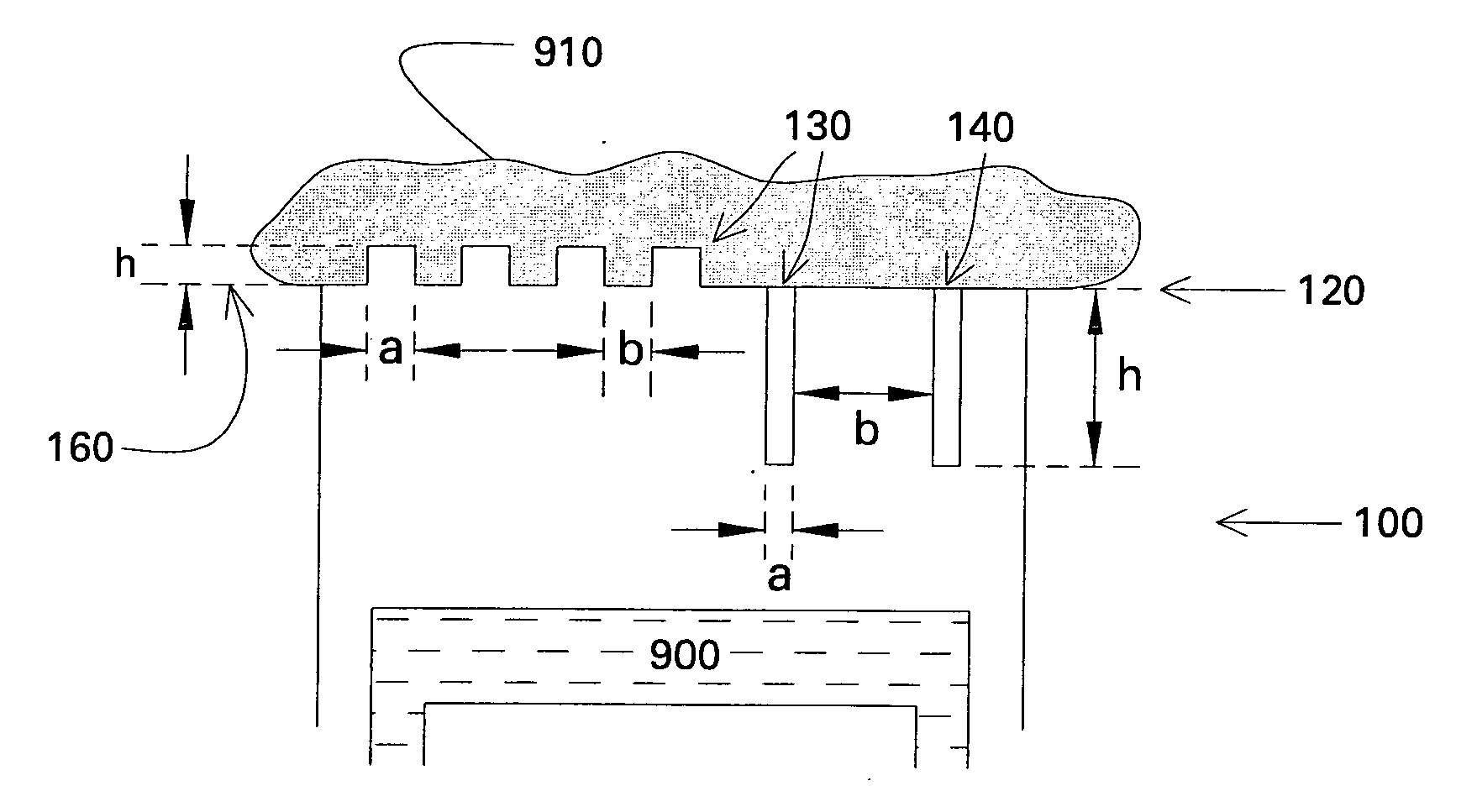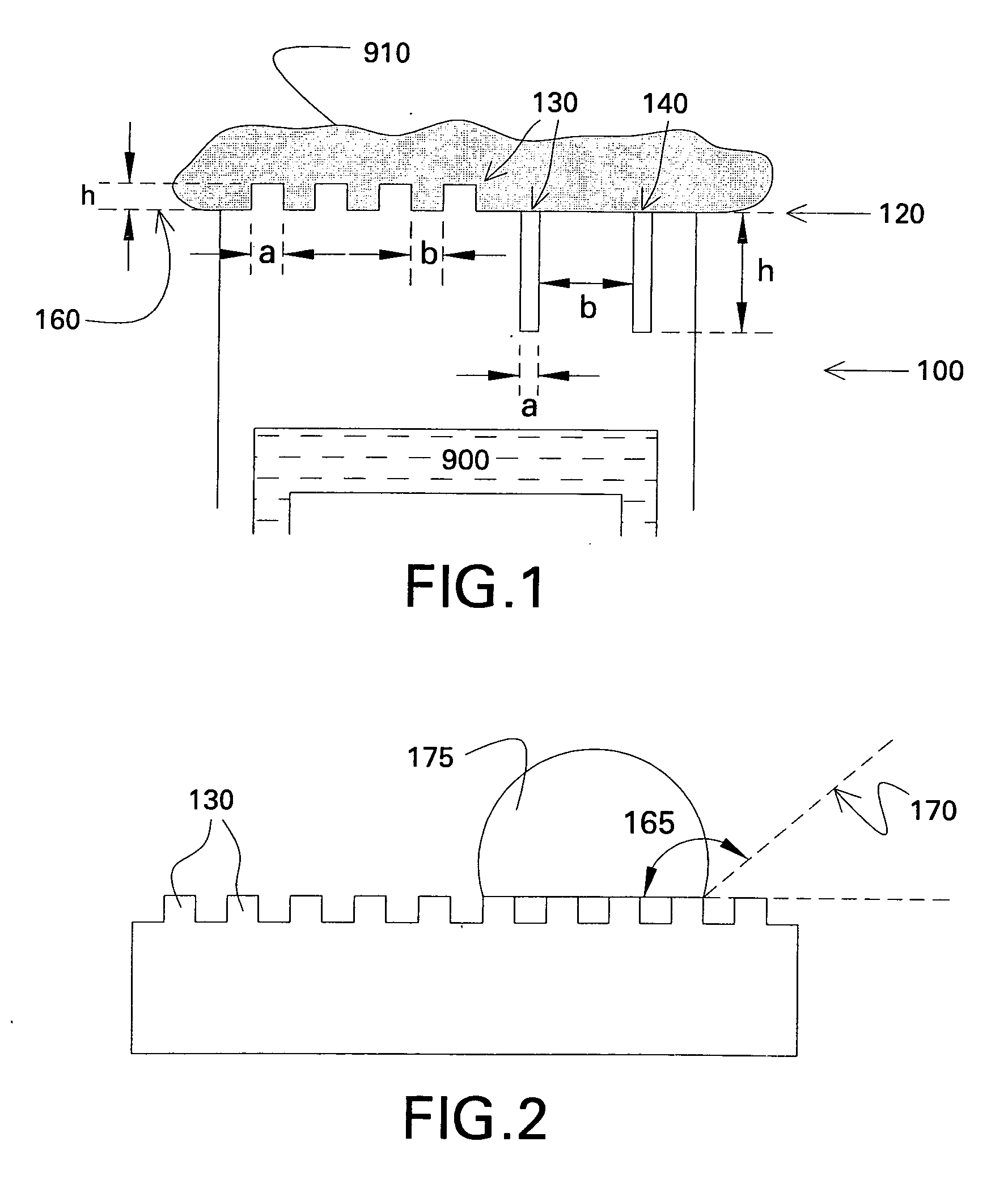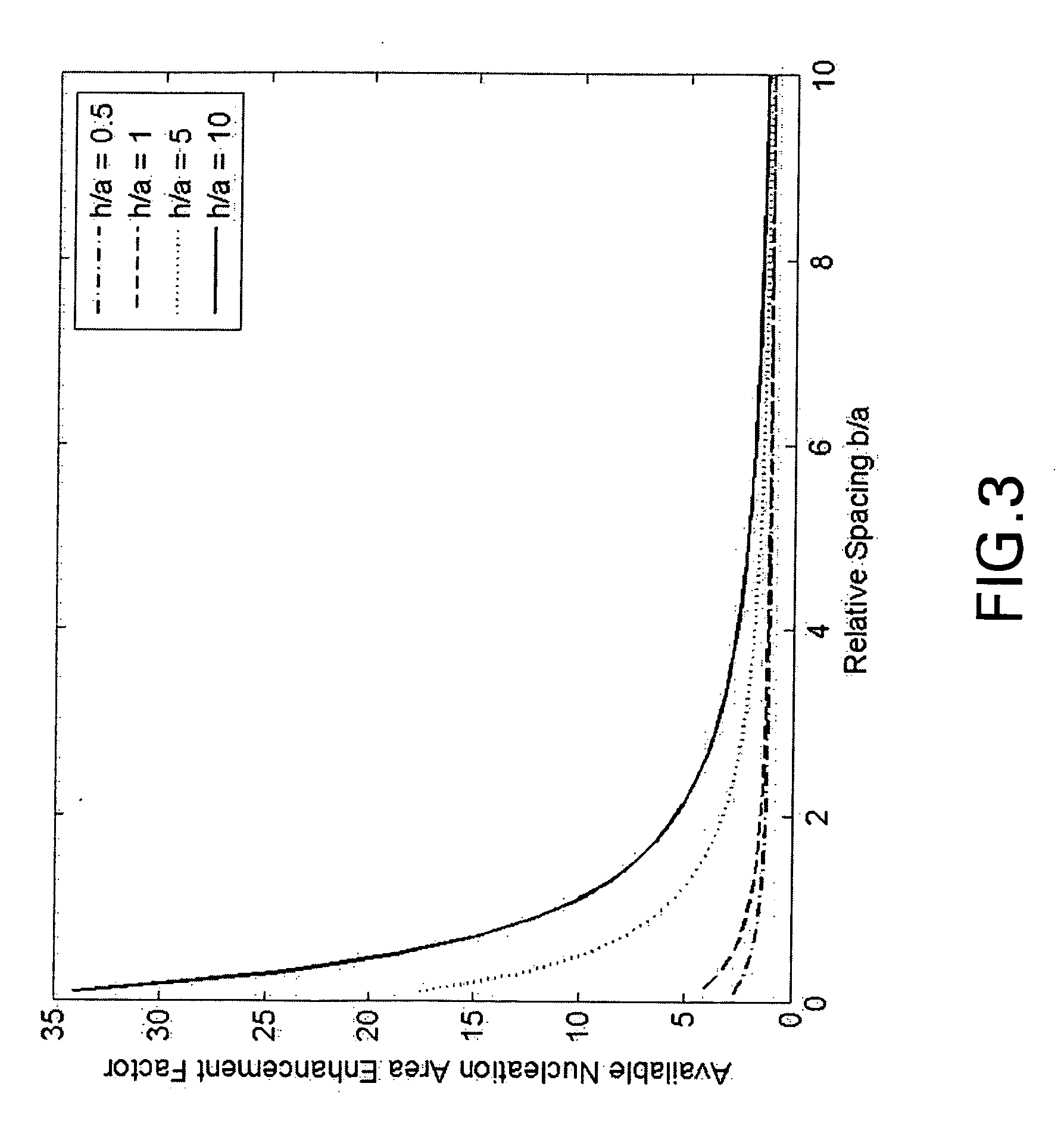Heat transfer apparatus and systems including the apparatus
a technology of heat transfer apparatus and system, applied in the direction of mechanical apparatus, light and heating apparatus, machines/engines, etc., can solve the problems of high heat transfer rate, inability to use additives in many applications, and significant thermal resistance between the surface and the vapor, etc., to promote and stabilize dropwise condensation
- Summary
- Abstract
- Description
- Claims
- Application Information
AI Technical Summary
Benefits of technology
Problems solved by technology
Method used
Image
Examples
example 1
[0060] An apparatus for heat transfer is designed. A maximum allowable drop diameter of up to 3 mm prior to roll-off is determined to be allowable to ensure proper levels of heat transfer. An aluminum tube is to be used as a heat transfer surface, and the surface of the tube that will contact the vapor to be condensed is anodized, using a process known in the art, to provide a layer of anodized aluminum oxide (AAO) of 100 micrometer thickness (h). The anodization process selected to perform this work can be manipulated to provide columnar pores having a median pore diameter (a) of about 10 micrometers with a median edge-to-edge spacing (b) of about 30 micrometers. Thus h / a is about 10 and b / a is about 3. Referring to FIG. 5, the selected process will provide a surface configured to effect roll-off at the desired maximum size for both Wenzel-state and Cassie-state drops. The AAO surface is treated with a very thin layer of fluorosilane, using a vapor deposition method known to the ar...
example 2
[0061] An experimental test apparatus was designed to measure heat transfer associated with condensation of steam. The test setup consisted of a steam generator, a condensing chamber, and a chill block, one end of which is exposed to the steam and the other end to cooler circulating water. The test sample was mounted onto the chill block so that steam condensed onto the surface of the sample. Heat transfer and associated heat transfer coefficients are determined by measuring the temperatures along the length of the block, the surface of the sample, and the temperature of the steam.
[0062] Silicon wafers (4″ diameter) with different surface properties were tested in the above apparatus. Sample A was a regular silicon wafer with water contact angle of about 43 degrees (hydrophilic), and served as a baseline. Sample B was coated with tridecafluoro-1,1,2,2-tetrahydrooctyl-trichlorosilane (fluorosilane) via vapor deposition, to increase its water contact angle to 110 degrees (hydrophobic...
example 3
[0063] A pipe composed of 6061 aluminum with a diameter of about one inch was first polished with fine sandpaper and then coated with anodized aluminum oxide (AAO) via an anodization process. The surface consisted of pores that were on average 90 nm in diameter, 500 nm in depth and a typical edge-to-edge spacing of about 10 nm. This specimen was then coated with fluorosilane via vapor deposition as in Example 1. When the surface was exposed to steam, stable dropwise mode of condensation was observed, with droplets being shed from the surface by rolling off.
PUM
| Property | Measurement | Unit |
|---|---|---|
| Length | aaaaa | aaaaa |
| Angle | aaaaa | aaaaa |
| Diameter | aaaaa | aaaaa |
Abstract
Description
Claims
Application Information
 Login to View More
Login to View More - R&D
- Intellectual Property
- Life Sciences
- Materials
- Tech Scout
- Unparalleled Data Quality
- Higher Quality Content
- 60% Fewer Hallucinations
Browse by: Latest US Patents, China's latest patents, Technical Efficacy Thesaurus, Application Domain, Technology Topic, Popular Technical Reports.
© 2025 PatSnap. All rights reserved.Legal|Privacy policy|Modern Slavery Act Transparency Statement|Sitemap|About US| Contact US: help@patsnap.com



